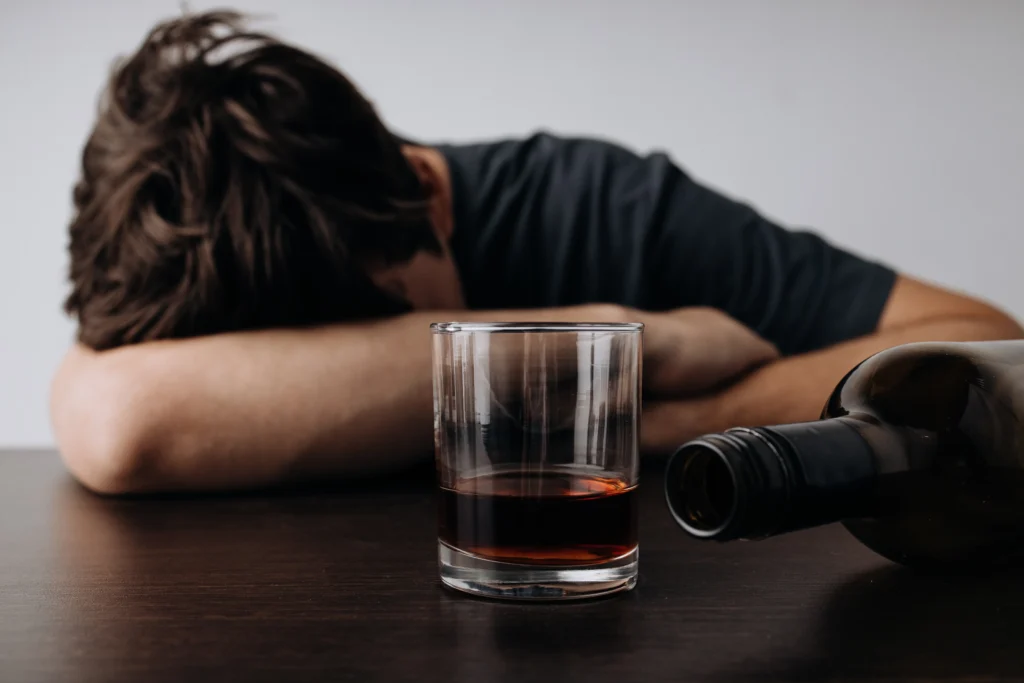Table of Contents
- Chapter 1: What is Alcohol/Drug Detox?
- Chapter 2: The Development of Addiction in Teens
- Chapter 3: How Detox Can Change Your Teen’s Life
- Chapter 4: Emotional and Psychological Transformation
- Chapter 5: Building Resilience and Life Skills
- Chapter 6: The Goals of Detox Treatment
- Chapter 7: The Detox and Treatment Process
- Chapter 8: Withdrawal Symptoms
- Chapter 9: How to Choose the Right Facility
- Chapter 10: Key Takeaways
Having access to medically supervised detox is crucial to prevent unwanted suffering or even death by teens in detox. Consider these facts:
According to NCDAS, the National Center for Drug Abuse Statistics, 5.2 million young adults (or 1 in 7 aged 18-25) needed substance abuse treatment; only 1.6% or 547,000 received treatment.
4,777 Americans aged 15 to 24 years old died of an overdose of illicit drugs in one year.
Understanding teen detox is of paramount relevance for parents and guardians of teens suffering from substance abuse issues.
Adolescence is a vulnerable period, and many teenagers experiment with drugs and alcohol, often without realizing the consequences. Therefore, being informed about the intricacies of teen detox is essential for several reasons.
| Detoxing from drugs or alcohol can be physically and emotionally taxing for teenagers. Parents and guardians need to understand the potential withdrawal symptoms, the importance of professional guidance, and how to provide emotional support during this challenging journey.
This guide aims to provide comprehensive information about drug and alcohol detox for teens. It equips parents and guardians with the knowledge to make informed decisions, access appropriate resources, and foster open communication with their adolescents.
Ultimately, understanding teen detox is not just about addressing the issue but about nurturing healthier and more resilient young adults.
Chapter 1: What is Alcohol/Drug Detox?
Alcohol and drug detox is the critical initial phase of addiction treatment, designed to help individuals safely rid their bodies of harmful substances and manage the withdrawal symptoms that often accompany cessation. It is important in addiction treatment for several reasons.
Firstly, detoxification ensures the physical safety of individuals as abrupt cessation of substances can lead to severe withdrawal symptoms, some of which can be life-threatening. Medical supervision during detox helps manage these symptoms and reduces the risk of complications.
Secondly, detox serves as a crucial gateway to further addiction treatment modalities like counseling and therapy. A clear, sober mind is better equipped to engage in the therapeutic process and address the underlying causes of addiction.
There are notable differences between detox for adults and teenagers. Teenagers’ developing bodies and brains may react differently to detoxification. Adolescents may experience more intense emotional and psychological symptoms during withdrawal.
Detox programs for teens often incorporate specialized counseling and education to address the unique challenges they face, such as peer pressure and family dynamics.
Alcohol and drug detox are vital components of addiction treatment, ensuring safety and setting the stage for long-term recovery. Recognizing the distinctions between adult and teenage detox is vital for tailoring treatment to meet the specific needs of each group.
Chapter 2: The Development of Addiction in Teens
Teenage addiction is a complex and growing concern in society, with far-reaching consequences for individuals, families, and communities.
Understanding how addiction can develop in teenagers and the associated risk factors is essential to address this pressing issue effectively. Furthermore, early intervention plays a pivotal role in preventing and treating substance abuse in adolescents.
This section explores the development of addiction in teenagers, the various risk factors involved, and emphasizes the critical importance of early intervention.
Development of Addiction in Teenagers
Vulnerable Brain Development
Teenagers are particularly susceptible to addiction due to the ongoing development of their brains. The adolescent brain is still maturing, especially in regions responsible for decision-making, impulse control, and judgment, such as the prefrontal cortex.
This developmental stage makes them more prone to impulsive behaviors, including experimenting with drugs and alcohol without fully comprehending the consequences.
Peer Pressure and Social Influences
Peer pressure and the desire to fit in are potent drivers of teenage addiction. Adolescents often seek acceptance and validation from their peers, which can lead them to experiment with substances they might otherwise avoid.
Peer groups that endorse substance use can create an environment where teenagers feel compelled to engage in risky behaviors, increasing the likelihood of addiction.
Coping Mechanisms
Teenagers may turn to drugs and alcohol as coping mechanisms for stress, anxiety, depression, or trauma. The pressures of academic performance, social relationships, and the challenges of adolescence can lead some individuals to seek relief through substance abuse.
This self-medication can spiral into addiction when it provides temporary relief from emotional pain.
Genetic Predisposition
Genetics plays a substantial role in addiction vulnerability. If teenagers have a family history of substance abuse, they are at a higher risk of developing addiction themselves. Genetic factors can influence how their bodies metabolize drugs and how their brains respond to the rewarding effects of substances.
Sensation-Seeking Behavior
Teenagers are naturally inclined to seek new experiences and sensations as part of their developmental stage. While this drive can be positive, it can also lead to experimentation with drugs and alcohol in pursuit of novel experiences. The thrill of trying something new can lead to addiction if the substance provides a powerful reward.
Lack of Knowledge
Many teenagers lack adequate knowledge about the risks associated with drug and alcohol use. They may underestimate the addictive potential of substances or believe that occasional experimentation is harmless.
The absence of awareness and education about addiction can contribute to its development.

Risk Factors for Teenage Addiction
Family Dynamics
Family plays a significant role in a teenager’s risk of addiction. Dysfunctional family environments characterized by parental substance abuse, neglect, or inconsistent discipline can increase the likelihood of teenage addiction.
Conversely, supportive and communicative families can act as protective factors.
Early Exposure to Substance Use
Teenagers who are exposed to drugs or alcohol at an early age, either through family members or social circles, are at a higher risk of addiction. Early exposure can normalize substance use and make it seem more acceptable or even expected.
Mental Health Disorders
Teenagers with underlying mental health disorders, such as anxiety, depression, or attention-deficit/hyperactivity disorder (ADHD), have an increased vulnerability to addiction.
They may turn to substances as a form of self-medication to alleviate their symptoms, inadvertently developing an addiction in the process.
Trauma and Adverse Childhood Experiences (ACEs)
Experiencing trauma or adverse childhood experiences (ACEs) can contribute to the development of addiction in teenagers. Traumatic events can lead to emotional distress, which some adolescents attempt to manage through substance abuse.
Academic Stress and Performance Pressure
The pressures of academic success and the desire to excel can lead teenagers to use substances as a means of coping with stress. The fear of failure or the pursuit of perfection can drive some students to turn to drugs or alcohol for relief.
Lack of Supervision
Teenagers who have minimal parental supervision or who frequently engage in unsupervised activities are more likely to experiment with drugs and alcohol. The absence of adult guidance can create opportunities for substance use.
Accessibility of Substances
Easy access to drugs or alcohol increases the likelihood of experimentation and addiction. Adolescents may obtain substances from friends, family members, or even through illicit channels with relative ease.
Sensation-Seeking Personality Traits
Some teenagers naturally possess sensation-seeking personality traits, making them more inclined to engage in risky behaviors, including substance abuse. These individuals may be drawn to the excitement and novelty associated with drug use.
The Importance of Early Intervention
Preventing Escalation
Early intervention is paramount in preventing substance abuse from progressing to full-blown addiction. When signs of experimentation or risky behavior emerge, addressing them promptly can stop the cycle of addiction before it takes hold.
Reducing Harmful Consequences
Substance abuse among teenagers can lead to numerous negative consequences, including academic problems, legal issues, damaged relationships, and health complications. Early intervention can mitigate these consequences and steer adolescents toward healthier paths.
Promoting Awareness and Education
Educating teenagers about the risks of addiction and substance abuse is an essential component of early intervention. Awareness programs, school-based initiatives, and open conversations at home can equip adolescents with the knowledge needed to make informed decisions.
Family Involvement
Incorporating family into the intervention process is often crucial. Family therapy and support can address underlying family dynamics that contribute to addiction and provide a stable and nurturing environment for recovery.
Access to Treatment
Early intervention ensures timely access to treatment resources. Adolescents who receive professional help in the early stages of substance abuse are more likely to experience successful outcomes.
Addressing Co-Occurring Disorders
Early intervention can identify and address co-occurring mental health disorders, which are often intertwined with substance abuse in teenagers. Treating both substance use and underlying mental health issues simultaneously is crucial for sustainable recovery.
Peer Support and Positive Influences
Early intervention can help teenagers connect with positive peer groups and mentors who discourage substance abuse and promote healthier alternatives.
Understanding the development of addiction in teenagers and the associated risk factors is essential to combat this pressing issue effectively. Early intervention plays a pivotal role in preventing and treating substance abuse in adolescents.
By addressing risk factors, providing education, involving families, and offering timely access to treatment, we can empower teenagers to make healthier choices, break the cycle of addiction, and lead fulfilling lives.
It is a collective responsibility to protect our youth from the devastating impact of addiction. Early intervention is the key to achieving this goal.
Chapter 3: How Detox Can Change Your Teen’s Life
Teenage detox is a critical component of addiction treatment for teens suffering from substance abuse. This section discusses the impact of detoxification on teenagers, exploring the physical, emotional, and social changes it can bring about.
To illustrate these transformations, we share success story case studies that highlight the positive outcomes achievable through effective teenage detox programs.
Physical Transformation
Substance abuse takes a toll on a teenager’s physical health, often resulting in malnutrition, organ damage, and a weakened immune system. Detoxification is the first step towards physical recovery.
As the body rids itself of harmful substances, it begins to heal, rejuvenating the individual’s overall health.
Case Study 1: Sarah’s Journey to Physical Recovery
Sarah, a 16-year-old struggling with opioid addiction, entered a detox program after numerous overdose scares. During her detox journey, she received proper nutrition, medical care, and therapy to address her physical ailments.
Over time, her vitality improved, and she gained back the weight she had lost. Detox was the turning point that allowed her body to heal, setting her on a path toward sustainable recovery.

Breaking the Cycle of Cravings
Detoxification plays a crucial role in breaking the cycle of addiction by reducing cravings and withdrawal symptoms. By eliminating substances from the body, detox helps teenagers regain control over their physical dependence on drugs or alcohol.
Case Study 2: Jake’s Triumph Over Cravings
Jake, an 18-year-old addicted to methamphetamine, had experienced intense cravings that drove his substance abuse. In detox, he received medication-assisted treatment (MAT) to manage withdrawal symptoms and cravings.
With time and support, Jake’s cravings diminished, giving him the mental clarity to engage in therapy and address the underlying causes of his addiction.
Chapter 4: Emotional and Psychological Transformation
Regaining Emotional Stability
Teenagers struggling with addiction often face emotional turmoil, including anxiety, depression, and mood swings. Detoxification provides a chance for emotional stabilization, as the removal of substances allows the brain to regain its chemical balance.
Case Study 3: Emily’s Emotional Resilience
Emily, a 17-year-old battling alcoholism, had been using alcohol to cope with her anxiety and depression. In detox, she received counseling and therapy to address her mental health challenges. As she progressed through the program, Emily’s emotional stability improved significantly.
Detox set the stage for her to develop healthier coping mechanisms and achieve lasting emotional wellness.
Enhanced Cognitive Function
Teenage substance abuse can impair cognitive function and hinder academic performance. Detoxification helps in restoring cognitive abilities, allowing teenagers to think clearly, focus on their studies, and make informed decisions about their future.
Case Study 4: Mark’s Academic Turnaround
Mark, a 15-year-old addicted to marijuana, had been struggling academically due to impaired concentration and memory issues. Detox provided Mark with the opportunity to detoxify his body and regain cognitive function.
As his mental clarity improved, he was able to excel in school, graduate, and pursue higher education, demonstrating the transformative potential of detox on a teenager’s academic prospects.

Social and Interpersonal Transformation
Rebuilding Relationships
Substance abuse often strains relationships with family and friends. Teenage detox programs emphasize the importance of repairing these connections, offering family therapy and counseling to heal the wounds caused by addiction.
Case Study 5: Alex’s Reconnection with Family
Alex, a 19-year-old who had distanced himself from his family due to his heroin addiction, underwent detox and subsequent family therapy. The program provided a platform for open communication and understanding.
As Alex worked through his issues and committed to his recovery, he was able to rebuild trust and strengthen his relationships with his loved ones.
Developing a Support System
Detox programs for teenagers encourage the development of a strong support system. This includes connecting adolescents with peers who understand their struggles and mentors who can guide them toward recovery.
Case Study 6: Maria’s Supportive Network
Maria, a 16-year-old addicted to prescription opioids, found solace in a detox program that emphasized group therapy and peer support. She formed meaningful connections with peers who were also on their recovery journeys.
These newfound friendships provided Maria with a support network that she could rely on during her challenging moments, reinforcing the idea that she was not alone in her battle against addiction.
Chapter 5: Building Resilience and Life Skills
Coping Mechanisms and Relapse Prevention
Detox programs equip teenagers with essential coping mechanisms and relapse prevention strategies. Through therapy and education, they learn healthier ways to manage stress, triggers, and cravings, reducing the risk of relapse.
Case Study 7: Daniel’s Relapse Prevention Toolbox
Daniel, a 17-year-old recovering from cocaine addiction, participated in a detox program that incorporated relapse prevention techniques. He acquired skills such as mindfulness, stress management, and recognizing high-risk situations.
Armed with this toolbox, Daniel felt better prepared to navigate the challenges of life without returning to substance abuse.
Goal Setting and Future Planning
Teenage detox programs encourage adolescents to set goals and plan for their future. Whether it’s pursuing higher education, vocational training, or employment, detox provides a foundation for building a brighter future.
Case Study 8: Lisa’s Ambition Unleashed
Lisa, an 18-year-old with a history of alcohol addiction, entered a detox program determined to regain control of her life. With the support of her treatment team, she outlined her aspirations and developed a clear plan for her future.
Detox not only helped her overcome addiction but also ignited her ambition to pursue a college education, showcasing the transformative potential of detox on a teenager’s aspirations.
Chapter 6: The Goals of Detox Treatment
Detox treatment for teens, like detox for adults, serves as a crucial starting point in the recovery journey from substance abuse.
The primary objectives of detox treatment for teens are to ensure their safety, manage withdrawal symptoms, and prepare them for ongoing addiction treatment. Here are the key objectives and their importance:
Safety
The primary concern during detoxification is the safety of the teen. Detox programs provide a medically supervised and controlled environment to monitor and manage potential health risks associated with withdrawal.
This is especially important for adolescents who may be more vulnerable to the physical and psychological effects of withdrawal.
Withdrawal Management
Detox helps teens safely navigate the withdrawal process. Withdrawal symptoms can be uncomfortable and sometimes even dangerous. Detox programs offer medical interventions and support to alleviate these symptoms, making the experience less distressing.
This is essential to prevent relapse, as many teens may return to drug use to alleviate withdrawal discomfort.
Physical Stabilization
Teens often experience physical health issues related to substance abuse. Detoxification addresses these issues by providing medical assessments and treatments, ensuring that any substance-related health problems are addressed promptly.
This sets the foundation for overall physical well-being.

Psychological Support
Detox programs offer counseling and emotional support to teens. This helps them cope with the psychological distress and cravings that can accompany withdrawal. Teens learn valuable skills to manage stress, triggers, and cravings, which are critical for long-term recovery.
Assessment and Treatment Planning
During detox, teens are thoroughly assessed to determine the extent of their substance use disorder and any co-occurring mental health issues. This assessment guides the development of a personalized treatment plan tailored to their unique needs.
Identifying and addressing underlying mental health concerns is crucial for successful recovery.
Education and Awareness
Detox programs educate teens about the nature of addiction, its impact on their lives, and the importance of continued treatment. They learn about the risks associated with substance abuse and gain insight into the recovery process, helping them make informed decisions about their future.
Transition to Ongoing Treatment
Detox serves as a bridge to more comprehensive addiction treatment. It helps teens transition from the acute withdrawal phase to the next level of care, which may include residential treatment, outpatient therapy, or support groups.
This continuity of care is vital for maintaining recovery momentum.
Family Involvement
Detox programs often involve the family in the treatment process. This can help repair strained relationships and provide a support system for the teen’s recovery. Family members learn how to best support their loved ones during and after detox.
In summary, detox treatment for teens is a critical first step in the recovery journey because it provides safety, medical support, psychological counseling, and a solid foundation for addressing the complex challenges of substance abuse.
It prepares them for ongoing addiction treatment and equips them with the tools and knowledge needed to maintain long-term sobriety.
Additionally, detox programs emphasize the importance of seeking comprehensive addiction treatment beyond detox to address the underlying causes of addiction and develop sustainable recovery strategies.
Chapter 7: The Detox and Treatment Process
Dealing with a teenager’s substance abuse is a challenging journey that requires patience, understanding, and professional guidance. The detox and treatment process for teenagers involves several stages, each essential for their recovery. In this guide, we’ll walk you through these stages and explain the crucial roles of medical professionals and therapists in helping your teen overcome substance abuse.
Stage 1: Assessment and Evaluation
Role of Medical Professionals: The process begins with a comprehensive assessment by medical professionals, such as pediatricians or addiction medicine specialists. They evaluate your teen’s physical health, substance use history, mental health, and any co-occurring disorders. This assessment helps determine the appropriate level of care.
Role of Therapists: Therapists, often addiction counselors or psychologists, conduct psychological assessments to understand the underlying causes and triggers of your teen’s substance abuse. This assessment helps tailor a treatment plan to meet your teen’s specific needs.
Stage 2: Detoxification
Role of Medical Professionals: In cases of severe physical dependence, your teen may require medical detoxification. This process involves supervised withdrawal, where medical professionals manage withdrawal symptoms and ensure safety. Medications may be prescribed to ease discomfort.
Role of Therapists: Therapists can provide emotional support during detox and help your teen understand the importance of completing this challenging phase. They may also address any psychological distress that arises during withdrawal.
Stage 3: Inpatient or Outpatient Treatment

Role of Medical Professionals: If the assessment indicates the need for intensive medical care, medical professionals may recommend inpatient treatment. In contrast, outpatient treatment is suitable for less severe cases. Physicians and nurses monitor your teen’s physical health throughout their stay.
Role of Therapists: Therapists play a central role in both inpatient and outpatient settings. They conduct individual and group therapy sessions, teaching coping skills, relapse prevention, and addressing the emotional aspects of addiction. Family therapy helps mend strained relationships and educates parents on providing support.
Stage 4: Continuing Care and Aftercare
Role of Medical Professionals: Medical professionals can continue to monitor your teen’s physical health, adjust medications, and address any medical issues arising during recovery.
Role of Therapists: Therapists remain pivotal in the aftercare phase. They help your teen transition back into daily life, providing ongoing therapy to prevent relapse. Support groups, such as Alcoholics Anonymous or Narcotics Anonymous, may also be recommended.
Stage 5: Family Involvement
Role of Medical Professionals: Medical professionals may recommend family therapy to address family dynamics, communication, and codependency issues. They can educate parents on addiction and its impact on the family.
Role of Therapists: Therapists facilitate family therapy sessions, providing a safe space for open communication and healing. They guide parents in setting boundaries, offering support, and understanding relapse triggers.
Stage 6: Long-Term Recovery
Role of Medical Professionals: Medical professionals monitor your teen’s overall health and well-being, addressing any medical issues that may arise. They can also collaborate with therapists to ensure a holistic approach to recovery.
Role of Therapists: Therapists continue to offer therapy sessions to support your teen’s long-term sobriety. They assist in developing a relapse prevention plan and encourage the development of a healthy, drug-free lifestyle.
Navigating the detox and treatment process for teenagers with substance abuse requires a collaborative effort between medical professionals and therapists. The medical team ensures physical health and safety, while therapists address the psychological and emotional aspects of addiction.
As a parent or guardian, your unwavering support and active involvement in your teen’s treatment journey are invaluable in helping them achieve lasting recovery
Chapter 8: Withdrawal Symptoms
Detoxification, or detox, is the process of removing toxic substances from the body, typically associated with substance abuse or addiction. Teens who are undergoing detox may experience a range of withdrawal symptoms, depending on the substance they are detoxing from.
It’s important to note that detox can be a challenging and potentially dangerous process, so it should always be conducted under the supervision of medical professionals.
List of Withdrawal Symptoms, Medication & Treatment
Here is a comprehensive list of withdrawal symptoms that teens may experience during detox, along with explanations of how these symptoms are managed and treated:
Nausea and Vomiting
- Management and Treatment: Anti-nausea medications may be prescribed to alleviate these symptoms. Hydration and small, easily digestible meals can also help.
Sweating and Chills
- Management and Treatment: Maintaining a comfortable room temperature and providing blankets can help regulate body temperature. Adequate hydration is important to prevent dehydration.
Anxiety and Restlessness
- Management and Treatment: Behavioral therapy and counseling can help teens cope with anxiety. In some cases, anti-anxiety medications may be prescribed under medical supervision.
Depression and Mood Swings
- Management and Treatment: Psychological counseling and therapy are crucial for addressing underlying emotional issues. In severe cases, antidepressant medications may be considered.
Irritability and Agitation
- Management and Treatment: Behavioral therapy and counseling can teach coping mechanisms and relaxation techniques. In some cases, mood-stabilizing medications may be prescribed.

Fatigue and Insomnia
- Management and Treatment: Ensuring a quiet, comfortable sleeping environment and establishing a regular sleep schedule can help with sleep disturbances. In some cases, sleep aids may be used temporarily.
Muscle Aches and Pains
- Management and Treatment: Over-the-counter pain relievers may be recommended to alleviate discomfort. Physical therapy and relaxation techniques can also be helpful.
Cravings
- Management and Treatment: Cognitive-behavioral therapy (CBT) and counseling can assist teens in developing strategies to manage cravings and prevent relapse. Support groups are also beneficial.
Diarrhea and Abdominal Cramps
- Management and Treatment: Hydration is crucial to prevent dehydration. Over-the-counter medications may be used for diarrhea and abdominal pain relief.
Tremors and Shakes
- Management and Treatment: Medications may be prescribed in severe cases to manage tremors. Relaxation techniques and physical therapy can also be beneficial.
Difficulty Concentrating
- Management and Treatment: Cognitive-behavioral therapy and educational support can help teens regain their focus and cognitive abilities.
Hallucinations or Delusions (in cases of severe withdrawal, e.g., alcohol or benzodiazepines)
- Management and Treatment: Immediate medical attention is required. Medical professionals may use medications to manage hallucinations and ensure the safety of the teen.
Seizures (in rare cases of alcohol or benzodiazepine withdrawal)
- Management and Treatment: Seizures are a medical emergency. Teens experiencing seizures during detox must receive immediate medical attention.
Chapter 9: How to Choose the Right Facility
Selecting a detox facility for a teenager is a critical decision that requires careful consideration of various factors to ensure the safety and effectiveness of the treatment.
Here is a checklist of criteria to help parents make an informed choice:
Accreditation and Licensing
Ensure the facility is accredited by reputable organizations and licensed to provide detox services for adolescents such as we are at Clearfork Academy.
Staff Credentials
Verify that the staff includes licensed medical professionals and experienced addiction counselors who specialize in treating teenagers.
Individualized Treatment
Look for facilities that offer personalized treatment plans tailored to your teenager’s specific needs and circumstances.
Medical Assessment
Ensure the facility conducts a thorough medical evaluation to determine the level of care required and any co-occurring health issues.
Evidence-Based Approaches
| Choose a facility that employs evidence-based treatment methods, such as cognitive-behavioral therapy, family therapy, and medication-assisted treatment when necessary.
Safety and Security
Assess the facility’s safety measures, including a secure environment to prevent access to drugs, self-harm, or unauthorized individuals.
Family Involvement:
Seek centers that involve families in the treatment process through counseling and support programs.
Aftercare Planning
Ensure the facility offers a comprehensive aftercare plan to support your teenager’s continued recovery.
Success Rate and Reviews
Research the center’s track record and read reviews or testimonials from former patients and their families.
Location and Accessibility
Consider the facility’s location, as proximity to home or support networks can be essential for family involvement.
Cost and Insurance
Understand the financial aspects, including insurance coverage, out-of-pocket expenses, and available payment options.
Holistic Services
Explore if the facility offers holistic services like yoga, art therapy, or nutritional counseling to address the teenager’s overall well-being.
Transparent Policies
Review the facility’s policies on visitation, communication, and the rights of the teenager during treatment.
By carefully assessing detox facilities based on these criteria, parents can make an informed decision that prioritizes their teenager’s safety, well-being, and long-term recovery.
Consulting with medical professionals and addiction specialists can also provide valuable guidance in this process
Chapter 10: Key Takeaways
- Early intervention and appropriate detox for teens struggling with substance abuse is critical.
- Encourage parents and guardians to seek professional help when needed.
- Use resources or contacts to find suitable detox facilities for teenagers.
Resources
Finding a detox center for a teenager struggling with substance abuse can be a challenging task. Seek professional guidance and explore reputable resources to ensure the safety and well-being of your child.
Here’s a list of resources and steps parents and guardians can follow when looking for detox centers for teens:
Helpline
National Helpline: Call the Substance Abuse and Mental Health Services Administration (SAMHSA) National Helpline at 1-800-662-HELP (1-800-662-4357) for immediate assistance and referrals to treatment centers in your area.
Local Medical Resources
Consult a Healthcare Professional: Start by consulting with your child’s pediatrician or a mental health professional. They can assess the situation and recommend appropriate treatment options.
Local Behavioral Health Authority: Contact your local behavioral health authority or government agency responsible for mental health and substance abuse services. They can provide information about treatment centers and support services in your community.
Online Resources for Teens
NIDA for Teens (National Institute on Drug Abuse): https://teens.drugabuse.gov/ – Offers information on drugs and addiction, as well as resources for teens seeking help.
Above the Influence: https://abovetheinfluence.com/ – Provides interactive tools and resources for teens to make healthy choices and resist peer pressure related to substance use.
The Cool Spot: https://www.thecoolspot.gov/ – A website aimed at teenagers that provides information on alcohol and peer pressure.
SMART Recovery for Teens: https://www.smartrecovery.org/community/forums/teen-recovery/ – An online community offering support and resources for teens in recovery.
Partnership to End Addiction for Teens: https://drugfree.org/ – Provides resources, information, and support for teens and their families dealing with addiction issues.
Teen-Anon: https://teen-anon.com/ – An online support community for teenagers struggling with addiction.
Online Directories
SAMHSA Treatment Locator: https://findtreatment.samhsa.gov/
Psychology Today’s Directory: https://www.psychologytoday.com/us/treatment-rehab
Educational Websites and Publications
Partnership to End Addiction: https://drugfree.org/
National Institute on Drug Abuse (NIDA): https://www.drugabuse.gov/
Other Organizations
Community Health Centers: Local community health centers often have information about detox and treatment options for teens.
Insurance Provider: Contact your health insurance provider to understand the coverage and network of treatment centers available under your policy.
Support Groups: Attend local support group meetings for parents and guardians of teens struggling with addiction. These groups can provide valuable insights and recommendations.
Other Steps To Consider
Talk to Other Parents: Connect with other parents who have gone through similar situations. They may share their experiences and recommend treatment centers.
School Counselors: Consult your child’s school counselor for guidance and referrals to appropriate resources.
Consult Multiple Treatment Centers: Reach out to several treatment centers to discuss your child’s needs, treatment options, and insurance coverage. It’s essential to find a program that aligns with your teenager’s specific requirements.
Consider Inpatient vs. Outpatient: Determine whether your child requires inpatient or outpatient detox and treatment based on their condition and the severity of the substance abuse.
Visit Facilities: If possible, visit the treatment centers you’re considering to assess the environment and meet the staff.
Verify Accreditation: Ensure that the treatment center is accredited by relevant organizations and complies with state regulations.
Financial Assistance: Inquire about financial assistance or scholarship programs that may help cover the costs of treatment.
Review Online Reviews and Testimonials: Look for online reviews and testimonials from individuals who have used the treatment center’s services.
Family Therapy: Explore options for family therapy or counseling, as involving the family in the recovery process can be beneficial.
Legal Support: If needed, consult with an attorney specializing in addiction and mental health law to understand your legal rights and responsibilities.
Remember that the process of finding the right detox center for a teenager can be emotionally challenging, but seeking professional help and support is crucial.
It’s essential to involve your child in the decision-making process when appropriate and to provide ongoing emotional support throughout their recovery journey.
Books for Parents
“Clean: Overcoming Addiction and Ending America’s Greatest Tragedy” by David Sheff – This book provides a comprehensive look at addiction and recovery and offers guidance for parents dealing with addicted teenagers.
“Addict in the House: A No-Nonsense Family Guide Through Addiction and Recovery” by Robin Barnett, EdD, LCSW – This book offers practical advice for families dealing with addiction and provides strategies for effective communication and support.
“Beyond Addiction: How Science and Kindness Help People Change” by Jeffrey Foote, Ph.D., and Carrie Wilkens, Ph.D. – The book explores the CRAFT (Community Reinforcement and Family Training) approach to helping loved ones with addiction.
“Beautiful Boy: A Father’s Journey Through His Son’s Addiction” by David Sheff is a poignant memoir that details a father’s struggle to help his addicted son and their journey toward recovery.
“The Recovery Book: Answers to All Your Questions About Addiction and Alcoholism and Finding Health and Happiness in Sobriety” by Al J. Mooney, MD, and – This guide explains the importance of seeking help for substance abuse and provides advice on how to find the right treatment center.


Anna graduated from Texas Tech University in 2012 with a Bachelor of Arts in Psychology and from Texas Wesleyan University in 2015 with a Master of Arts in Professional Counseling. Anna has been in the mental health field since 2015 and held a variety of leadership roles since 2017 in Residential, Inpatient, PHP/IOP and private practice levels of care. Anna approaches therapy and leadership with the mindset that we are all one life event from seeking care ourselves and aims to foster an environment in which both the client and staff well-being are the priority. Anna is an introverted foodie who enjoys reading, watching dateline/sports and spending time with her husband, daughter, and fur babies, Dora & Teddy.




